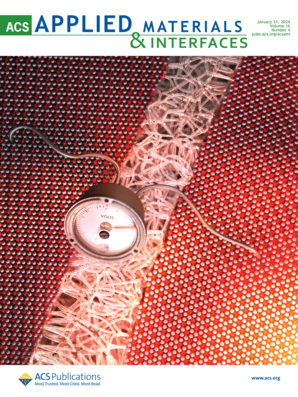4-MSK和C. Reinhardtii微针贴片通过多途径协同作用减轻黑色素沉积。
IF 8.3
2区 材料科学
Q1 MATERIALS SCIENCE, MULTIDISCIPLINARY
引用次数: 0
摘要
色素沉着症(Hyperpigmentation, HP)主要由紫外线照射或局部炎症引发,而这两种因素产生的自由基是各种皮肤病的核心诱因。本研究提出了一种多途径、高效的黑色素沉积治疗策略。设计了一种基于水解胶原蛋白(HC)和聚乙烯吡罗烷酮(PVP)的微针(MN)系统,用于将莱茵衣藻(C. reinhardtii)和4-MSK钾(C.r&4- msk -MN)精确递送到皮肤组织。C. reinhardtii含有独特的抗氧化成分,如砷蛋白、多不饱和脂肪酸(PUFAs)和藻类多糖,使其区别于小球藻等其他微藻。体外自由基清除实验表明,在1 × 109个细胞/mL浓度下,莱茵草对DPPH·、ABTS·+和·OH自由基的清除率分别为89.26%、101.44%和103.57%。此外,4-甲氧基水杨酸钾(4-MSK)可抑制酪氨酸酶活性,促进皮肤代谢。因此,C.r&4-MSK-MN具有以下优势:一方面,C.r&4-MSK-MN成功突破皮肤屏障,直接将莱茵C.r&4-MSK-MN输送到靶部位,清除自由基,减少对黑色素生成的刺激。另一方面,4-MSK抑制酪氨酸酶活性,减少黑色素合成,同时促进皮肤代谢,减少皮肤表面黑色素沉积,实现多途径减少黑色素沉积。实验结果表明,在动物模型中,C.r&4-MSK-MN能显著降低大鼠表皮厚度,显著降低黑色素的产生。这一研究成果不仅为黑色素沉积的治疗提供了新的策略,也证实了微藻在皮肤护理(如美白、抗衰老)和药妆等领域具有潜在的应用前景。本文章由计算机程序翻译,如有差异,请以英文原文为准。
Microneedle Patches Coloaded with 4-MSK and C. Reinhardtii Alleviate Melanin Deposition Through Multipathway Synergy.
Hyperpigmentation (HP) is mainly triggered by ultraviolet irradiation or local inflammation, and the free radicals generated by these two factors are the core inducers of various skin diseases. This study proposes a multipathway and highly efficient treatment strategy for melanin deposition. A microneedle (MN) system based on hydrolyzed collagen (HC) and polyvinylpyrrolidone (PVP) was designed to precisely deliver Chlamydomonas reinhardtii (C. reinhardtii) and potassium 4-MSK (C.r&4-MSK-MN) to skin tissues. C. reinhardtii contains unique antioxidant components such as arsenoproteins, polyunsaturated fatty acids (PUFAs), and algal polysaccharides, which distinguish it from other microalgae like Chlorella. In vitro free radical scavenging experiments show that at a concentration of 1 × 109 cells/mL, C. reinhardtii exhibits scavenging rates of 89.26%, 101.44%, and 103.57% against DPPH·, ABTS·+, and ·OH radicals, respectively. In addition, potassium 4-methoxysalicylate (4-MSK) can inhibit tyrosinase activity and promote skin metabolism. Therefore, C.r&4-MSK-MN has the following advantages: on one hand, C.r&4-MSK-MN successfully breaks through the skin barrier, directly delivering C. reinhardtii cells to the target site to scavenge free radicals and reduce the stimuli for melanin production. On the other hand, 4-MSK inhibits tyrosinase activity to reduce melanin synthesis and, at the same time, promotes skin metabolism to reduce melanin deposition on the skin surface, achieving multipathway reduction of melanin deposition. Experimental results showed that in animal models, C.r&4-MSK-MN significantly reduces the epidermal thickness of rats and substantially decreases melanin production. This research outcome not only provides a new strategy for the treatment of melanin deposition but also confirms that microalgae have potential application prospects in the fields of skin care (such as whitening and antiaging) and cosmeceuticals.
求助全文
通过发布文献求助,成功后即可免费获取论文全文。
去求助
来源期刊

ACS Applied Materials & Interfaces
工程技术-材料科学:综合
CiteScore
16.00
自引率
6.30%
发文量
4978
审稿时长
1.8 months
期刊介绍:
ACS Applied Materials & Interfaces is a leading interdisciplinary journal that brings together chemists, engineers, physicists, and biologists to explore the development and utilization of newly-discovered materials and interfacial processes for specific applications. Our journal has experienced remarkable growth since its establishment in 2009, both in terms of the number of articles published and the impact of the research showcased. We are proud to foster a truly global community, with the majority of published articles originating from outside the United States, reflecting the rapid growth of applied research worldwide.
 求助内容:
求助内容: 应助结果提醒方式:
应助结果提醒方式:


